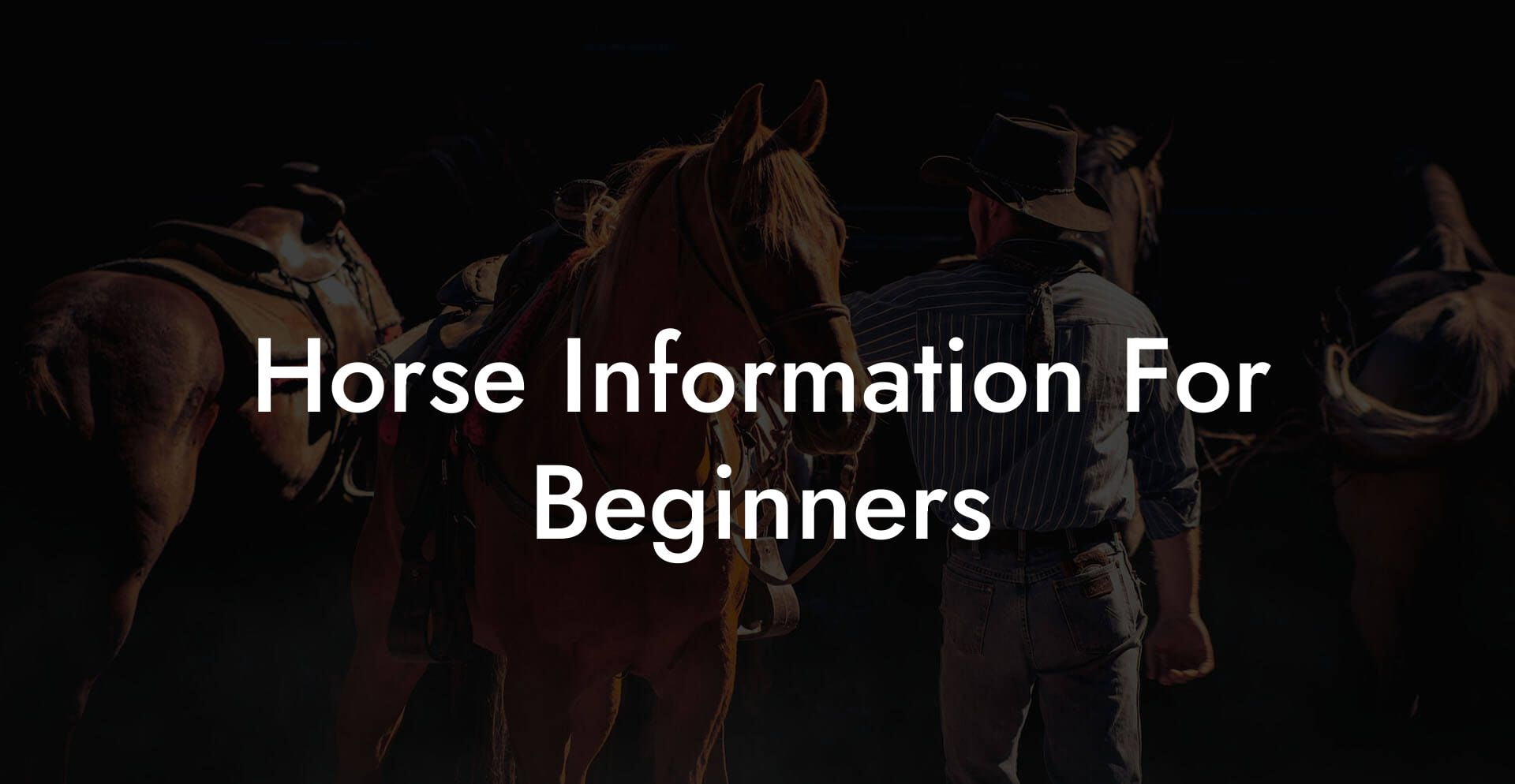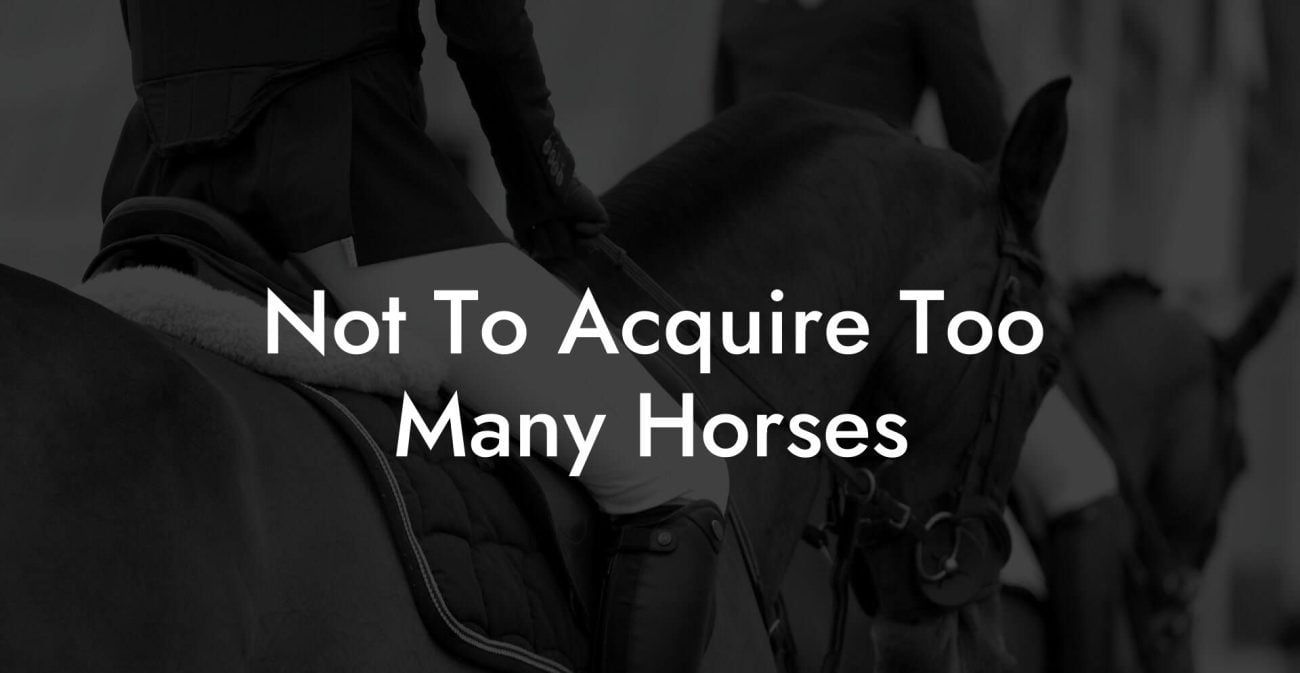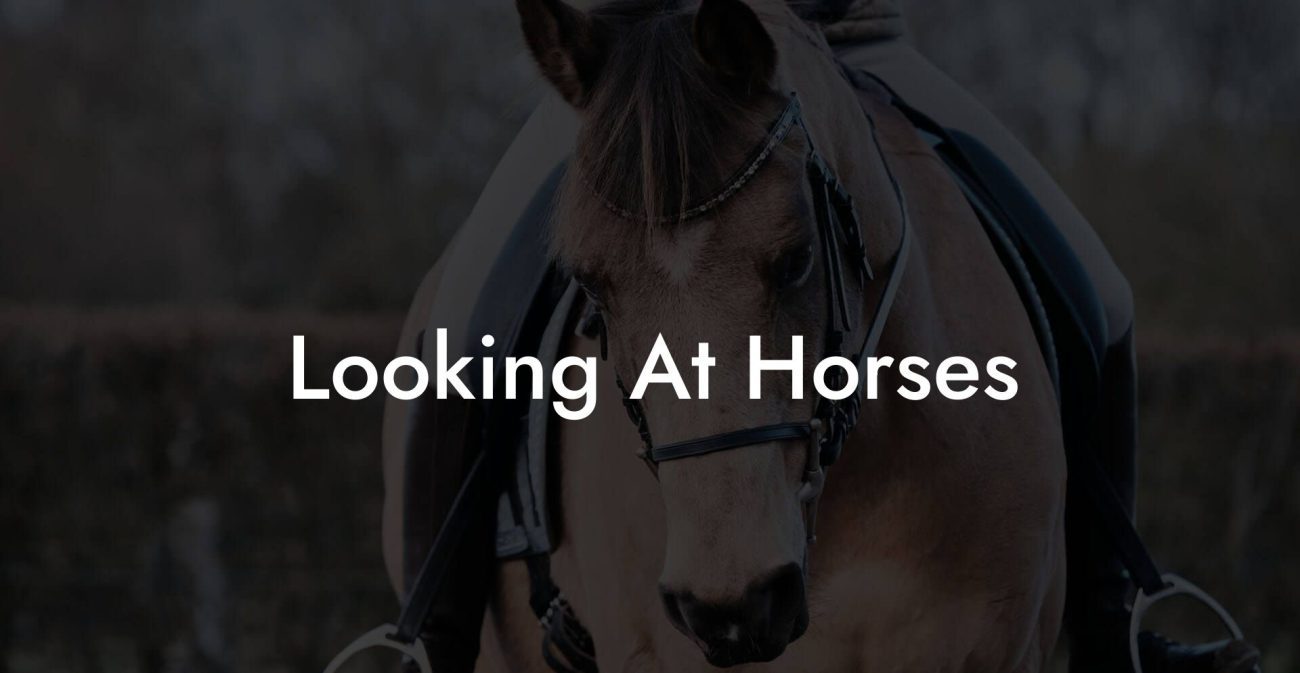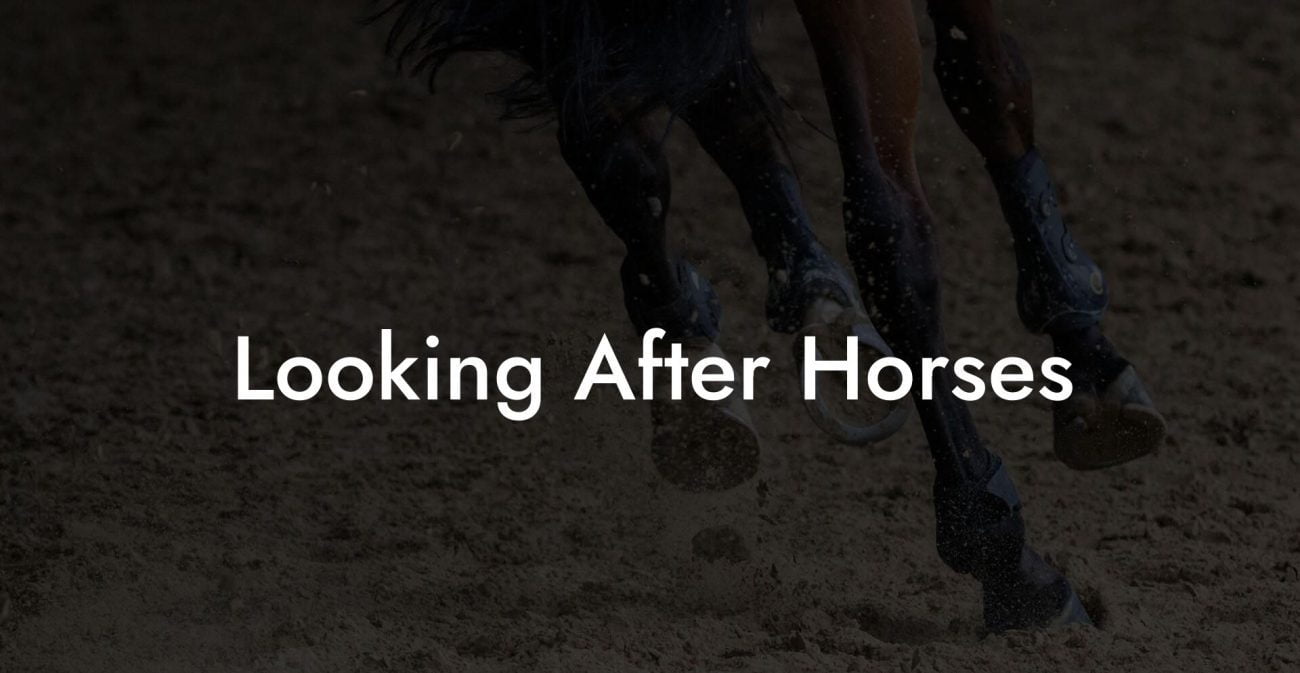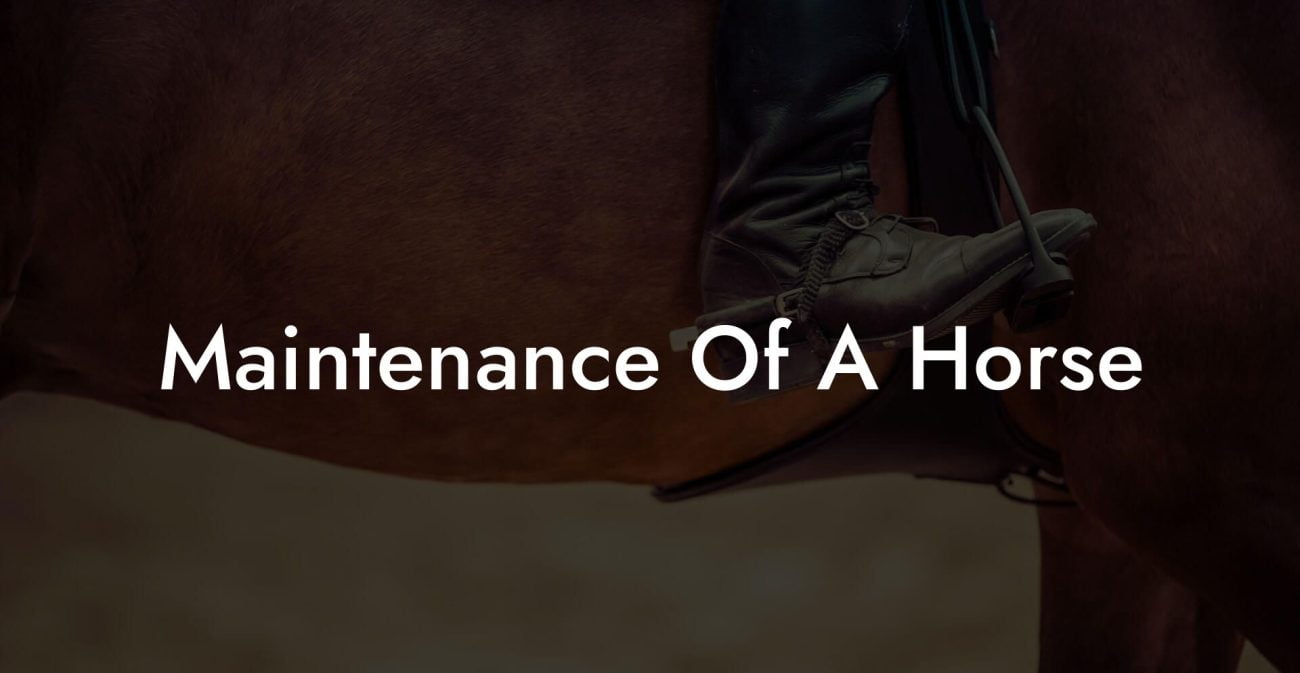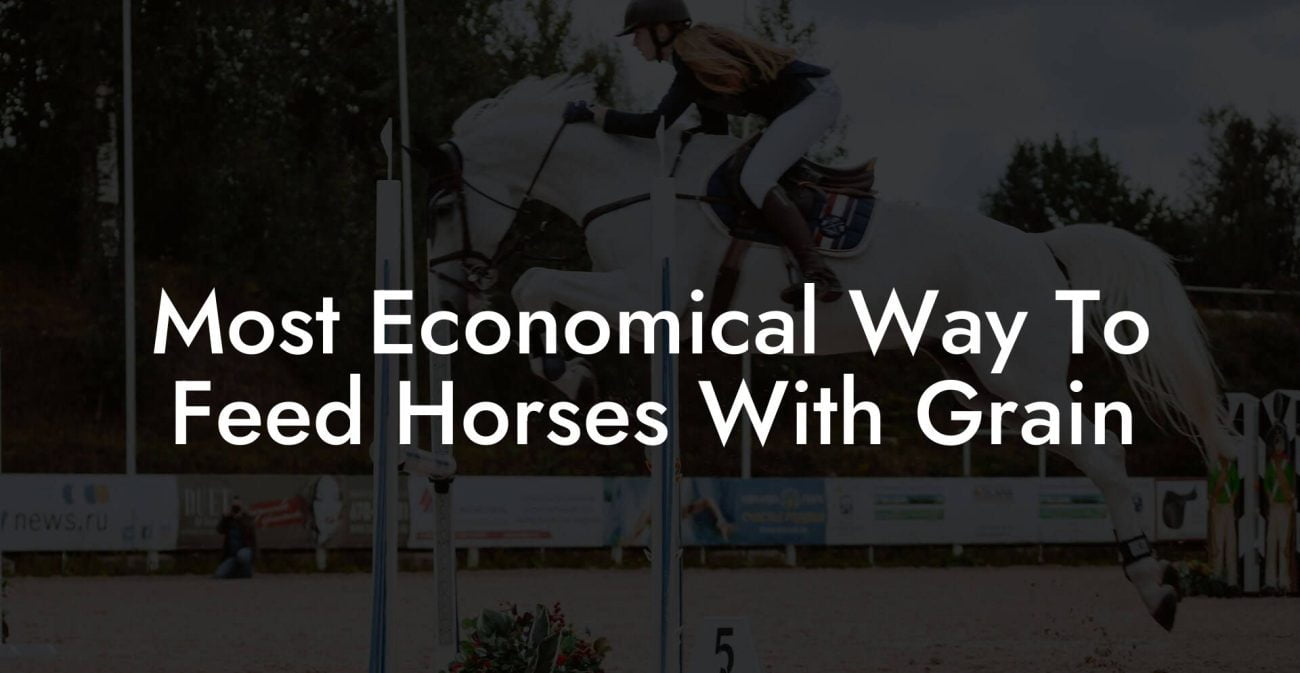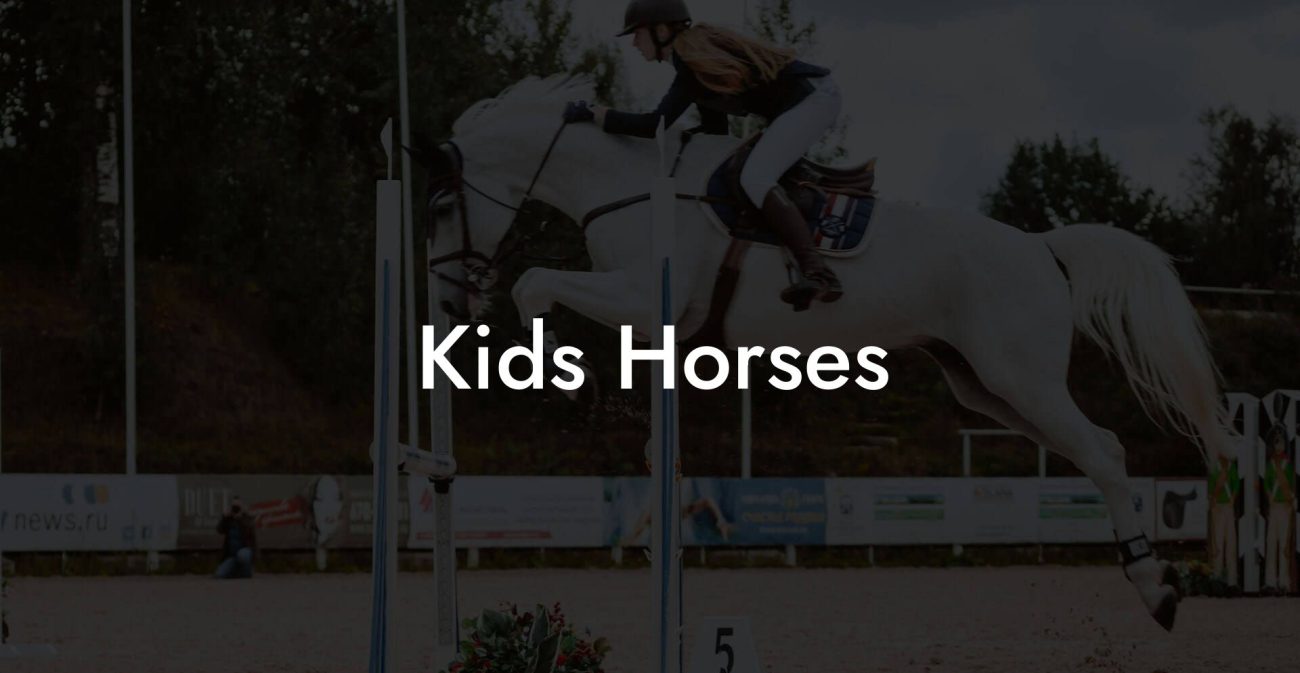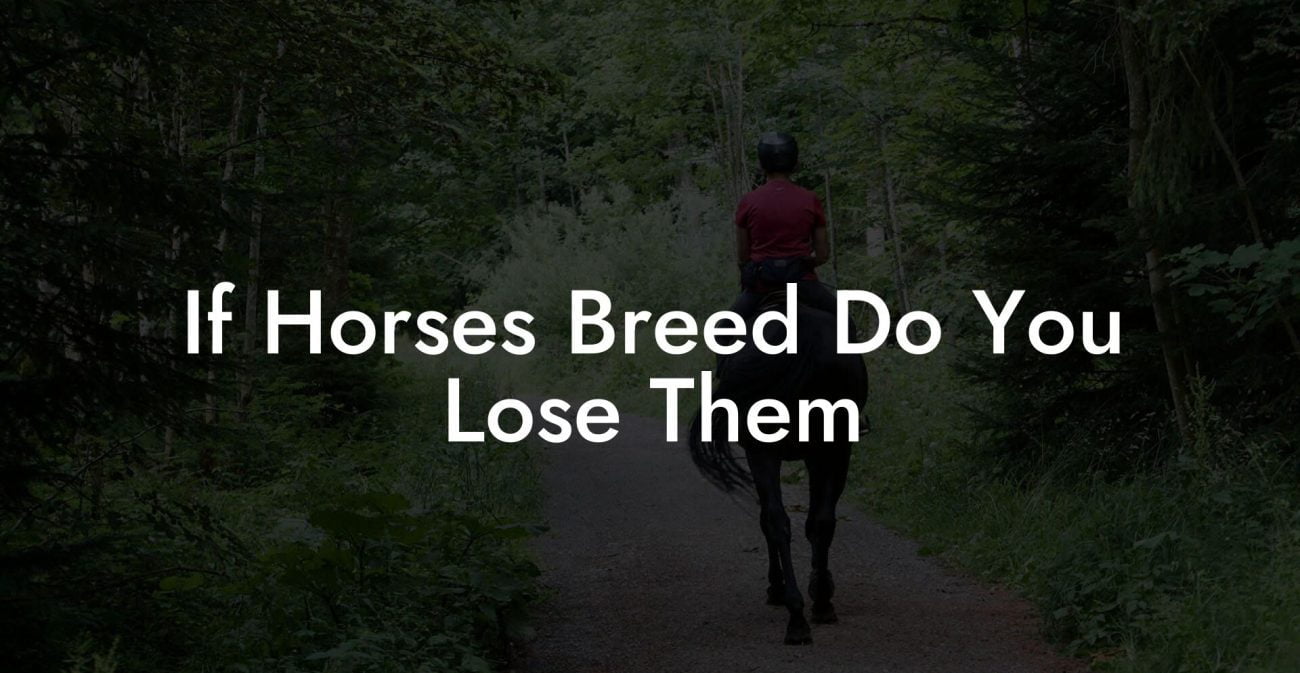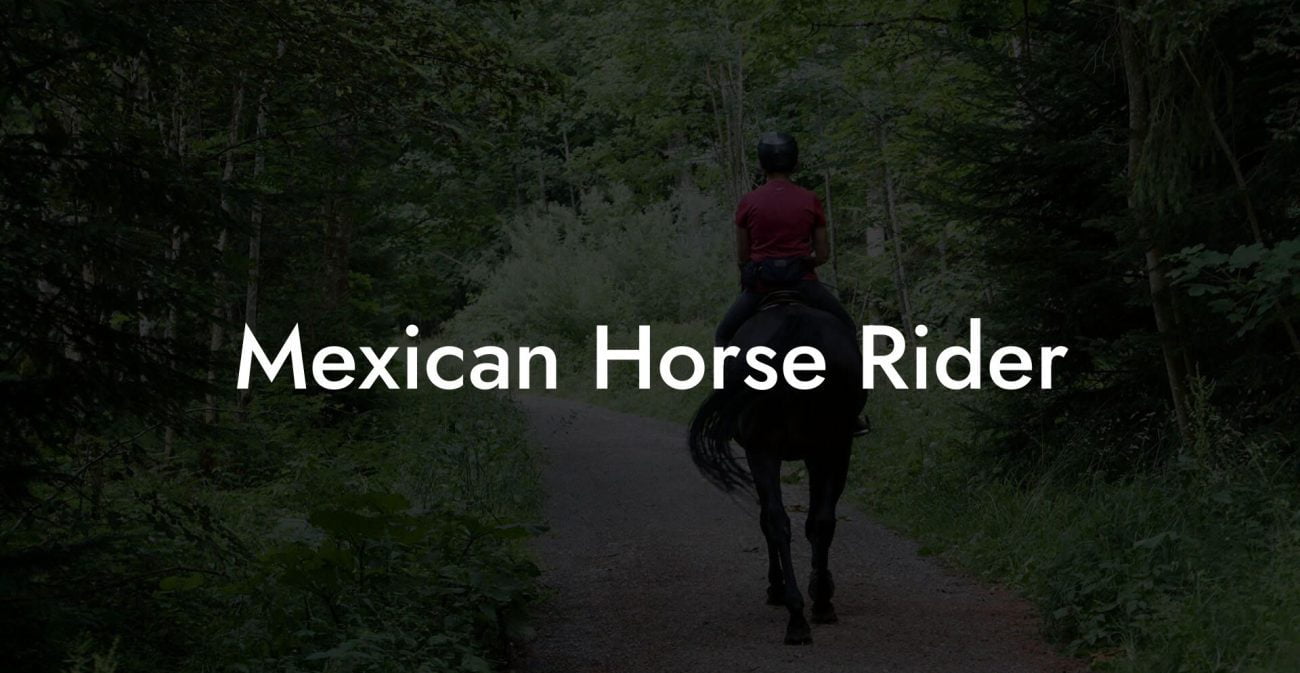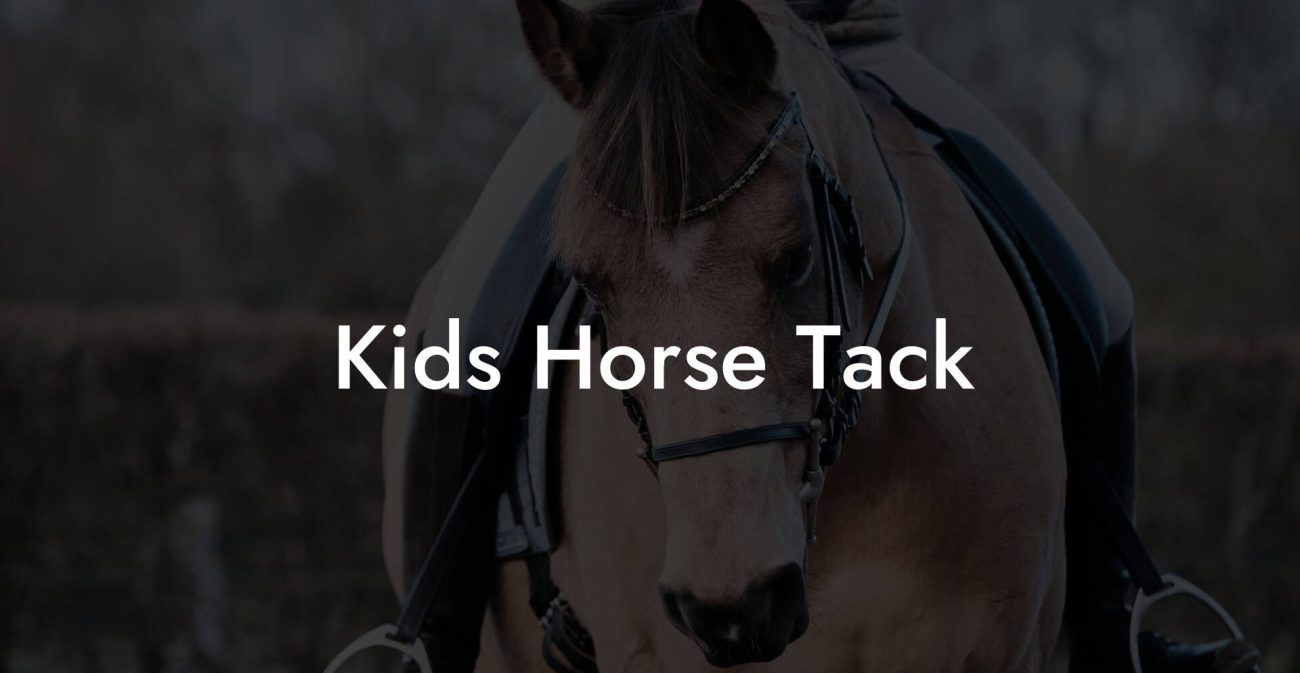Ever wondered what it’s like to have a four-legged bestie galloping into your life, bringing with it endless adventures and a sprinkle of wild, untamed charm? Whether you’re scrolling through TikTok for the latest equine trends or you’ve just stumbled upon your first horse care article, this guide is your ultimate ticket into the fascinating world of horse care for beginners. Get ready to discover everything from the ABCs of horse behavior and nutrition to stable management and safety hacks, all served with a dash of humor, real talk, and practical tips that resonate with Gen-Z and millennials alike.
Quick Links to Useful Sections
- Understanding Your Equine Companion: The Ultimate Beginner’s Guide
- Selecting the Right Horse: A Beginner’s Roadmap to Your First Equine Partner
- Horse Nutrition: Fueling Your Equine Friend for Life
- Daily Horse Care Essentials: grooming, Exercise, and Routine Maintenance
- Stable Management and Environment: Creating a Safe Haven
- Horse Health and Veterinary Essentials: Keeping Your Steed in Top Shape
- Understanding Horse Behavior and Training: Building a Trusting Connection
- Horse Safety and Handling: Gear, Techniques, and Best Practices
- Resources and Community Support: Your Next Steps on the Journey
- FAQ: Your Horse Care Questions Answered
- Your Journey to Empowered Equine Care
Understanding Your Equine Companion: The Ultimate Beginner’s Guide
Horses aren’t just large, majestic creatures, they’re complex, social beings with personalities as diverse as the memes you share online. Getting to know your equine friend is like unlocking a treasure trove of ancient wisdom and modern wonder. In this section, we’ll dive into the basics: What makes a horse tick, the different types of horses, and why understanding their behavior is the first step towards becoming a pro in horse care.
At its core, horse care is about building a relationship based on trust, respect, and lots of patience. Horses communicate through body language, subtle sounds, and even the tilt of their ears. Keen observation is your secret weapon to understanding their moods and needs. Whether you’re at a barn, on a trail ride, or simply watching epic horse videos online, remember that every whinny and snort tells a story.
Equine science has come a long way, and it’s now well known that horses form strong bonds, not only with other horses but also with the humans who care for them. As you begin your journey, expect a mix of emotional bonding, physical care, and even a bit of horse psychology. Incorporating the right mindset and key insights into horse behavior will help you make informed decisions about training, diet, and daily routines.
By demystifying the world of horses, you’re taking a giant leap toward becoming an informed, confident, and compassionate caretaker. And trust us, this is a journey that’s just as rewarding as it is educational.
Selecting the Right Horse: A Beginner’s Roadmap to Your First Equine Partner
One of the most exhilarating parts of the equestrian journey is choosing your first horse. It might sound like picking a favorite influencer, but it’s so much more than that, it’s about matching personalities, energy levels, and goals in horse care. Before you fall head over heels (pun intended), take some time to understand what type of horse fits your lifestyle.
First, consider the breed. From the elegant Arabian to the sturdy Quarter Horse, each breed brings something unique to the table. Arabians are known for their endurance and spirited nature, while Quarter Horses are often celebrated for their agility and calm temperament. If you’re more into a laid-back, friendly vibe, a pony or a smaller, more manageable breed might be just the ticket.
Don’t forget to assess the horse’s history. Some horses are raised for leisure, while others are trained for performance. A rescued horse might need extra patience and rehabilitation, but the bond you build can be incredibly rewarding. Conversely, a well-trained horse might be more suited for those seeking a polished ride from day one.
It’s also crucial to factor in your own lifestyle: How much experience do you have? How many hours can you commit to daily care? What financial and space commitments are you ready for? These questions will help steer you in the right direction. Remember, owning a horse isn’t just a hobby, it’s a commitment to another living being who thrives on companionship, routine, and a loving environment.
Armed with these insights, you’re now better prepared to take that essential first step. Whether you’re visiting local stables or exploring adoption options, know that selecting the right horse is the foundation of a fulfilling, adventurous, and educational horseback journey.
Horse Nutrition: Fueling Your Equine Friend for Life
Just like you wouldn’t fill up on instant noodles every day, horses need a balanced, nutrient-rich diet to stay vibrant and healthy. This section is all about the juicy details (pun totally intended): What to feed your horse, how much, and why nutrition is the unsung hero in overall horse care.
The backbone of horse nutrition is high-quality forage. Grass and hay aren’t just tasty treats for horses, they’re essential sources of fiber and energy. For beginners, understanding the differences between various types of hay (alfalfa vs. timothy) can seem overwhelming, but here’s the lowdown: Alfalfa is high in protein and calcium, making it great for younger, actively growing horses, while timothy hay is milder and more digestible, a perfect match for mature horses or those with sensitive digestive systems.
Alongside hay, many horses enjoy grains, but these should only be an adjunct to their diet. Grains can provide quick energy, but too much can lead to digestive problems or even behavioral hyperactivity. Modern equine nutritional science emphasizes the importance of a balanced diet, one that meets the horse's energy requirements while supporting overall health and wellbeing. Supplements such as vitamins, minerals, and omega fatty acids can also play a crucial role, especially if your horse’s forage is less than ideal.
It’s also important to note the significance of water. Horses are 60-70% water, so watching their hydration levels is critical. Clean, fresh water should be available at all times, and in hotter climates or during vigorous exercise, increased water intake is a must.
With the right nutritional systems in place, you support not just your horse’s physical health, but also their mental and emotional states. A well-fed horse is typically happier, more alert, and displays fewer signs of stress. So, whether you’re preparing a feeding schedule or consulting with a veterinarian for dietary advice, remember that good nutrition is the fuel that keeps the wheels of equine adventures turning.
Daily Horse Care Essentials: grooming, Exercise, and Routine Maintenance
If you thought that owning a horse was all about scenic rides and picturesque pastures, think again! Daily horse care dives into the nitty-gritty of grooming, exercise, and routine maintenance that keeps your equine companion looking and feeling their best.
Grooming is where your bonding time really starts. A thorough grooming session does wonders beyond just keeping the coat shiny. Brushing removes dirt, untangles the mane, and even gives you a sneak peek into your horse’s health. Keep an eye out for skin irritations, cuts, or unusual bumps, your horse is your partner in crime, and their wellbeing reflects on you as much as your ponytail trend!
Daily care also includes exercise routines tailored to your horse’s age, breed, and overall health. Young horses might need more gentle play, while older horses can benefit from consistent, low-impact activities like light trotting and trail rides. Regular exercise not only maintains muscle tone and cardiovascular health but also helps stave off boredom and anxiety. As you set up your horse’s daily schedule, aim for a balanced mix of work and play that mirrors your own ambitions and energy levels.
Don’t neglect those little details, either. Hoof care, for example, is non-negotiable. Daily checks for debris, proper shoeing (if applicable), and scheduled farrier visits keep your steed’s hooves in top shape. Clean, well-maintained hooves are crucial in preventing injuries and ensuring a smooth ride, literally.
In addition to physical care, creating a structured routine is key. Horses are creatures of habit and thrive on consistency. From feeding times to exercise and grooming sessions, having a well-planned daily schedule minimizes stress for both you and your horse. Use apps or even a good old-fashioned planner to track activities and maintain a healthy balance. In essence, daily horse care is a dance of love, consistency, and attention to detail, a routine that pays off in a spirited, healthy, and happy companion.
Stable Management and Environment: Creating a Safe Haven
The stable isn’t just where your horse sleeps, it’s their personal sanctuary. Whether you’re living in a sprawling countryside estate or managing a small urban barn, ensuring that your horse’s environment is safe, comfortable, and hygienic is paramount. This section breaks down everything from stall design to bedding choices, giving you the tools to transform your space into an equine paradise.
A well-designed stable takes into account ventilation, space, and cleanliness. Good airflow prevents the build-up of harmful gases and moisture, reducing the risk of respiratory problems. Spacious stalls allow horses the freedom to move around and stretch their limbs, which is essential for overall health. Safety features such as non-slip floors and secure doors should also be a top priority. After all, a happy horse is one that can move freely without the fear of injury.
Bedding materials hold an important place in stable management. Options like straw, shavings, or even recycled paper bedding offer varied benefits. Straw, for instance, is highly absorbent but may require more frequent cleaning, while shavings offer a softer surface that minimizes injury risk. The key is to make sure that bedding is kept clean and replaced regularly to maintain a hygienic environment.
Additionally, don’t forget about the outdoor paddock. A well-maintained pasture or paddock gives your horse the chance to graze, exercise, and socialize with other horses. Fencing, shade, and a clean water source in the paddock can make outdoor time a safe and enjoyable experience. Regularly inspect and repair any wear and tear to the fencing to prevent escapes or injuries.
By focusing on stable management and environmental safety, you’re not just providing a roof over your horse’s head, you’re creating a holistic setting that supports their physical, mental, and emotional well-being. Think of it as designing the ultimate living space where your winged companion can flourish, adopt a routine, and truly feel at home.
Horse Health and Veterinary Essentials: Keeping Your Steed in Top Shape
Just like any other living being, horses need regular health check-ups and proactive care to stay in peak condition. From routine vaccinations to dental checks and deworming, understanding the essentials of horse health is a non-negotiable aspect of responsible equine care.
A key point in horse health is preventive veterinary care. Regular check-ups not only catch issues early but also help maintain an up-to-date vaccination schedule. Vaccinations protect your horse from dangerous diseases such as tetanus and influenza, while routine deworming prevents digestive complications. Establishing a relationship with a trusted veterinarian creates an open line of communication and ensures you have a professional ally in times of need.
Dental health is another often-overlooked aspect. Horses’ teeth continuously grow and can develop sharp edges or uneven wear, leading to eating difficulties and other health issues. Regular dental floating, the process of filing down sharp points, ensures your horse can enjoy their meals without pain and maintain proper nutrition.
Monitoring body condition, weight, and overall vitality is also an important daily task. Learn to recognize subtle signs of distress such as changes in behavior, coat condition, or appetite. These early warning signs can mean everything when it comes to timely intervention and an effective treatment plan. With modern technology and a plethora of online resources, tracking your horse’s health has never been easier, and many apps now allow you to log health data for a comprehensive overview.
Finally, in moments of emergency, knowing first-aid procedures can be a lifesaver. Familiarize yourself with basic equine first aid, everything from wound care and managing lacerations to handling colic. With a well-stocked first-aid kit and a keen sense of observation, you can be prepared for those unexpected moments that call for immediate action. Taking proactive steps in horse health means investing in your horse’s longevity, happiness, and overall quality of life.
Understanding Horse Behavior and Training: Building a Trusting Connection
A smart horse is a happy horse, and establishing a deep, trusting relationship with your equine partner is the cornerstone of successful training and care. Understanding horse behavior goes beyond reading body language, it’s about connecting with a being that blends instinct with intelligence.
Horses are naturally herd animals with complex social structures. From recognizing subtle shifts in posture to interpreting the nuances of a nicker, being attuned to your horse’s behavior can signal when something is off. For beginners, spending time observing seasoned horses or even taking lessons from a professional trainer can rapidly boost your confidence and understanding.
Training methods today emphasize positive reinforcement over harsh corrections. Reward-based techniques not only foster a respectful bond but also enhance your horse’s willingness to learn. Whether it’s through treats, gentle pats, or simply a kind word, positive feedback reinforces good behavior and builds your horse’s confidence. This approach mirrors trends in modern parenting and pet care that value empathy, respect, and trust.
Begin with simple exercises that bolster communication. Groundwork, for instance, is a fantastic introductory training tool. It teaches your horse to follow cues without a saddle or bridle, using body language and voice commands as powerful tools in building mutual respect. As your understanding deepens, gradually introduce more complex tasks like leading, lunging, or eventually riding.
The key is patience and consistency. Just as it takes time to master a new level in your favorite video game, building a reliable connection with your horse is a gradual process. Celebrate small victories, and don’t be discouraged by setbacks, they’re part of the journey. Ultimately, a well-trained horse isn’t just a pleasure to ride, it’s a partner in adventure, a confidante, and a living reminder of the harmony that exists between human intelligence and natural instinct.
Horse Safety and Handling: Gear, Techniques, and Best Practices
Safety is the name of the game when it comes to horse care, and both you and your equine friend deserve the best protection out there. From choosing the right equipment to mastering safe handling techniques, this section covers all you need to know to ensure that every ride, every grooming session, and every stable check is as safe as it is enjoyable.
First up: equipment. Whether you’re looking for a halter that feels like a second skin or the perfect bridle for your first countryside ride, investing in quality gear can prevent numerous mishaps. Look for items that are durable, comfortable, and specifically designed for horse safety. Many brands now cater to a modern, trend-savvy audience by combining safety with stylish designs that even your Instagram feed will envy.
Mastering handling techniques is equally essential. Horses are naturally sensitive to loud noises and unexpected movements, so adopting a calm, deliberate approach is key. Techniques such as leading with proper posture and using clear, consistent commands go a long way in preventing accidents. For newcomers, consider attending a clinic or workshop, hands-on experience under expert guidance can transform your confidence and handling skills.
In addition, always prioritize personal safety by wearing suitable footwear and protective helmets when riding. Modern helmets blend safety standards with stylish designs that cater to the tastes of both Gen-Z and millennial riders, ensuring you look as cool as you feel secure.
Finally, safety extends to emergency preparedness. Keep a well-stocked first-aid kit on hand, familiarize yourself with basic equine emergency procedures, and establish a clear plan with your local veterinarian in case the unexpected happens. With the right mindset and gear, handling your horse becomes not just a routine task but an empowering experience that combines excitement with unmatched safety.
Resources and Community Support: Your Next Steps on the Journey
No great journey is ever taken alone, and the equestrian community is one of the most supportive and diverse networks out there. Whether you’re a complete newbie or looking to deepen your knowledge, tapping into trusted resources and community support can propel your passion for horse care to new heights.
Start by exploring online communities, social media groups, and dedicated forums where fellow enthusiasts share daily updates, troubleshooting tips, and inspirational success stories. Sites like YouTube, Instagram, and TikTok are brimming with creative, relatable content that demystifies even the most complicated aspects of horse care, from stable management hacks to advanced training techniques.
Local stables, riding clubs, and equine centers offer in-person classes, workshops, and even volunteer opportunities that can accelerate your learning curve. Meeting experienced horse owners and trainers not only provides hands-on experience but also builds a network of mentors who can guide you through challenges and celebrate your successes.
Beyond community events, don’t overlook the treasure trove of books, online courses, and webinars tailored to modern equine care. From understanding the latest nutrition research to implementing cutting-edge stabling techniques, these resources allow you to remain at the forefront of best practices in horse care.
As you take your next steps, remember that every bit of knowledge and each connection adds tremendous value to your journey. Embrace the process of learning and engaging with a community where every tip, every shared experience, and every moment of fellowship serves as a stepping stone toward a deeper, more informed relationship with your equine companion.
FAQ: Your Horse Care Questions Answered
Curious about specific details or need quick answers to common questions? We’ve compiled a list of frequently asked questions to help you navigate the world of horse care with ease.
1. What are the essential components of horse care for beginners?
Essential components include proper nutrition, routine grooming, exercise, stable management, regular veterinary check-ups, and ongoing training. This holistic approach ensures your horse remains healthy, happy, and well-adjusted.
2. How often should I groom my horse?
Grooming should be a daily routine or at least several times a week. Regular grooming not only keeps your horse’s coat in great shape but also helps you notice early signs of health issues.
3. What type of food is best for my horse?
A balanced diet primarily consists of high-quality hay or pasture, supplemented with grains and appropriate vitamins/minerals based on your horse’s age, workload, and any specific health concerns.
4. How do I know if my horse is healthy?
Regular health check-ups by a veterinarian, monitoring body condition, observing behavior, and keeping up with vaccinations and dental care are important indicators of a horse’s well-being.
5. How can I get started with training my horse?
Begin with groundwork exercises and positive reinforcement techniques. Consider enrolling in beginner training classes, and always consult with experienced trainers to build a strong foundation.
6. What safety equipment should I invest in as a beginner?
Key safety items include a well-fitting helmet, durable riding boots, properly maintained halters, and a first-aid kit for both you and your horse. Quality gear helps prevent injury and builds confidence.
7. Can I manage horse care on my own, or should I seek professional help?
While many aspects of horse care can be managed independently through diligent research and community support, always consult professionals for veterinary care, advanced training, and specialized stable management.
8. Where can I find more resources about horse care?
Online forums, social media groups, local equestrian centers, and specialized books or courses are excellent resources. Engaging with a community of horse enthusiasts can also provide invaluable insights.
9. What are some common mistakes beginners make?
Common pitfalls include neglecting routine cleaning and maintenance, overfeeding without balancing nutritional needs, and underestimating the amount of time and commitment required. Learning from these mistakes is part of the journey.
10. How important is it to build a personal bond with my horse?
Building a personal bond is crucial, it enhances communication, trust, and overall effectiveness in training and care. A strong relationship fosters a mutually rewarding experience.
Your Journey to Empowered Equine Care
Embracing horse care as a beginner is like unlocking a whole new world paved with endless opportunities for learning, growth, and adventure. Every brush stroke on a glossy coat, every carefully measured feeding routine, and every encouraging word during training builds not only a healthy, thriving horse but a rich personal connection. It’s an investment in a lifestyle that’s as much about discipline and routine as it is about trust and joyful spontaneity.
The steps you take today, exploring nutritional strategies, mastering stable management, and delving into behavior training, lay the foundation for a long-lasting, rewarding relationship with your equine companion. With every bit of knowledge you acquire, you’re better equipped to adapt and embrace the dynamic nature of horse care in a modern, fast-paced world where authenticity and practicality reign supreme.
From following trendy equestrian influencers to collaborating with local stables and online communities, your journey into horse care is both a personal adventure and a collaborative experience. Let curiosity be your guide and empathy your constant companion. Every challenge overcome and every success celebrated is a testament to your commitment and passion.
So, gear up, dive into the world of horse care with confidence, and let each day bring you closer to mastering the art of nurturing one of nature’s most majestic creatures. Your journey to empowered equine care starts now, enjoy every ride, every lesson, and every unforgettable moment along the way.

